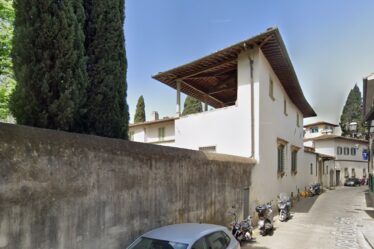

Perhaps not everyone knows that outside the Cathedral of Florence there were two small bells, one still visible. One was placed near the Porta dei Canonici on the southern side of the Duomo, a flowery Gothic style of the late ‘400 work by Lorenzo di Giovanni D’Ambrogio and Piero di Giovanni Tedesco. This bell was called “last” as the sound had to solicit the canons, whose accommodations are located in the square of the chapter to enter the chorus for the various liturgies. It was decorated with the monogram of Christ in the center while on the sides there are the crucifix and the Madonna and Child. The bell is a musical instrument that emits the sound thanks to the percussion exercised by the battaglio (or Batacchio).
The percussion causes in the sound vase a deformation and a series of prolonged vibrations over time, more intense an instant after percussion and progressively until the state of quiet. The particular shape of the bell generates various sound sources, otherwise positioned, which interact with each other determine a very complex sound spectrum. The percussion point determines the development and direction of the different vibrant waves. The vibration of the bell takes place simultaneously in two directions, long The circumference is from top to bottom, forming “ventral” areas of maximum energy and “nodal” areas of nothing, variously distributed. The width of vibration is maximum at the edge, and decreases approaching the top.
But let’s go back to the second bell that can be seen in the apsidal part, under the first balcony who surrounds the dome of the sacristy. It is still on its wooden hub and supported to the shelves of the wall structure. Probably this bell ringed “the nod” or warns the faithful outside the cathedral who was about to be celebrated a mass, and certainly had a rope that was operated inside the sacristy



